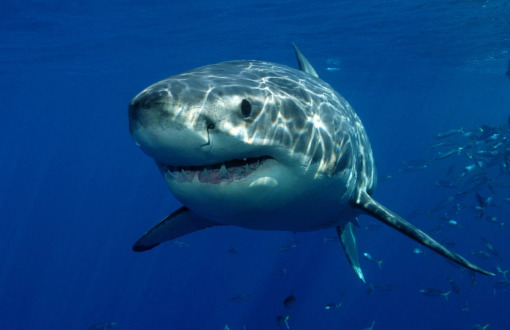Don't wanna be here? Send us removal request.
Photo

0 notes
Photo

#still tryna figure out everything below his below but i think this is pretty good for daichi#a character i barely draw anymore#think i need to change his name maybe
0 notes
Photo

0 notes
Photo

i think i got my old style back
0 notes
Text
The Extreme World of Deep Sea Cephalopods
Although it is the home of approximately 98% of the ocean’s species, the deep sea is a frontier yet to be explored by natural scientists. Of the estimated 500.000 to 10 million species living on or above the seafloor, new species are discovered and described by marine biologists every year. Being one of the biggest and most extreme environments on Earth, the deep sea’s biodiversity is enormous in both species of prey and predators. From demonic red octopi to gigantic squid wrestling with sperm whales, the most interesting group of marine predators would be the deep sea’s cephalopods.
The biggest problem living as a squid at 5000 meters depth is the pitch black environment you have to hunt in. A great variety of cephalopods have adapted to their surroundings in the most extreme ways. One of the easiest feeding strategies is what we call “passive hunting”, and one of the more scary-looking squid known to science – the genus Magnapinna – uses this technique in the most bizarre way. Known commonly as Bigfin squid, or Long-armed squid, this group is known for its irregular big fin-size and extremely long arms. Although previously only known from caught juveniles, in 2007 an eerie video was made by a research facility in the Gulf of Mexico. What they saw was a 8 meters-long adult squid, floating around in the abyss.

Magnapinna sp.
Another more obvious feeding strategy is active hunting: squid are known to chase and ambush their prey using their intelligence and extremely complicated eyes. While we know that the eyes of squid are highly adapted and look similar to those of a mammal, there’s one species that takes it a step further. The so-called strawberry squid (Histioteuthis heteropsis) gets its name from the strawberry-like appearance of its skin. The light-producing speckles, or photophores, are supposed to confuse predators. What’s more interesting however, is the fact that it has one “normal” eye and one big green eye. It is believed that the smaller eye detects bioluminescence generated from potential prey, while the other eye watches the sky and filters faint light from above.

Histioteuthis heteropsis
While the strawberry squid tries to confuse its own predators, sometimes the best defense is simply being bigger than the predator. Some squid have evolved to be gigantic, take for example the Humboldt squid (Dosidicus gigas) from the gulf of Mexico. The human sized squid are known to be hostile towards divers and even hunt in packs – sometimes referred to as “a squad of squid”. An even bigger squid can be found in the deep: the Giant and Colossal squid (genus Architeuthis and Mesonychoteuthis) are known to reach sizes over 10 meters. There is only one animal capable of fighting a gigantic squid: the 16-meter long Sperm whale. Although never observed by biologists, evidence of squid-whale battles can be found on stranded whales. Circular marks, believed to be caused by the suckers of the squid, cover the hide of several found Sperm whales.
Lastly, there’s one group of cephalopods often overlooked by the general public. Having the creepiest name from the deep sea, the Vampire squid is one of the most interesting organisms on Earth. Its Latin name Vampyroteuthis infernalis literally means “vampiric squid from hell”, but its name is scarier than the animal itself. The Vampire squid feeds on the so-called deep sea snow: flakes of waste material that slowly falls to the ocean floor. It uses a long thread-like appendage to collect the snow and brings it to its mouth.
Thought to be the common ancestor of both squid and octopi, the bright red molluscs share a lot of characters with the other cephalopods. There are however some differences. When threatened, Vampire squids cannot simply swim away. Instead, they use an unique arsenal of defensive strategies. The filaments between their tentacles can be used to protect their soft bodies, exposing spiny structures on the inside of the tentacles. In addition, Vampire squid have no ink-sacs like other lineages, but can emit fluorescent fluids to scare predators away.

Vampyroteuthis infernalis
There’s a lot we still don’t know about the deep sea and its inhabitants, but every day new species are being discovered by marine biologists. We don’t have to look for other planets to find aliens, the weirdest organisms can be found below the waves, waiting for us.
Hi I’m Werner, master student and invertebrate enthusiast. Most information was found through the Monterey Bay Aquarium Research Institute: if you’re interested in deep sea stuff like me, check out their site.
1K notes
·
View notes
Photo


Purple-ring topsnail (Calliostoma annulatum)
The purple-ring topsnail is a medium-sized sea snail with gills and an operculum.This is a sublittoral marine gastropod mollusk in the family Calliostomatidae. This snail lives off of the Pacific coast of North America.his species is fairly omnivorous, feeding seasonally on kelp, sessile fauna like bryozoans, and detritus.
photo credits: Peter Liu Photography, Ed Bierman
4K notes
·
View notes



















